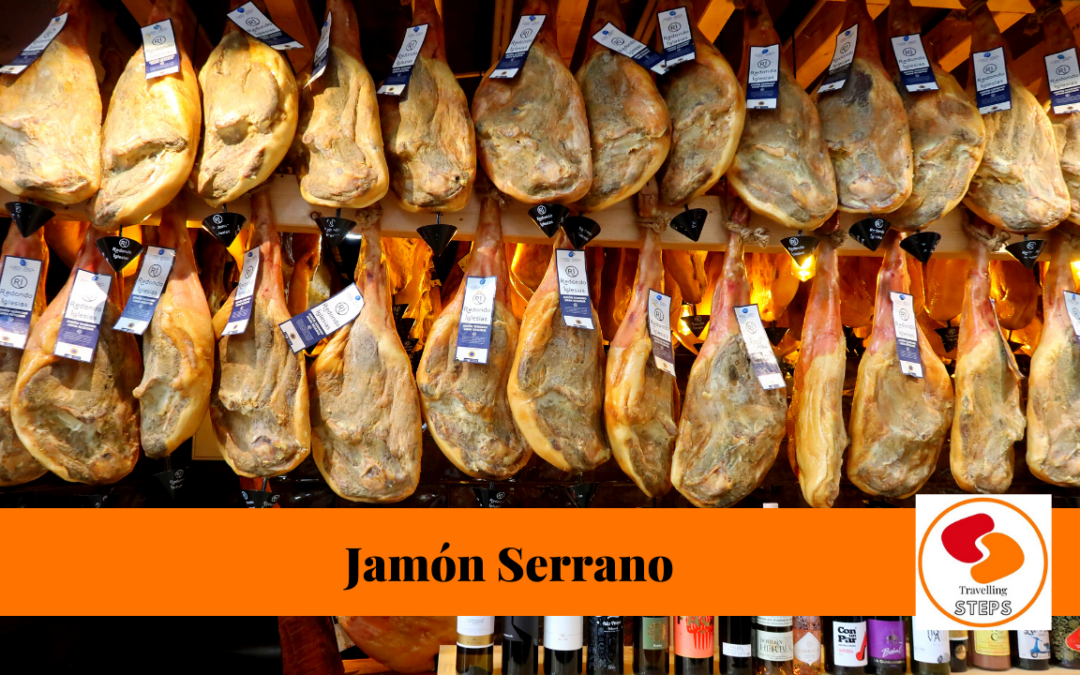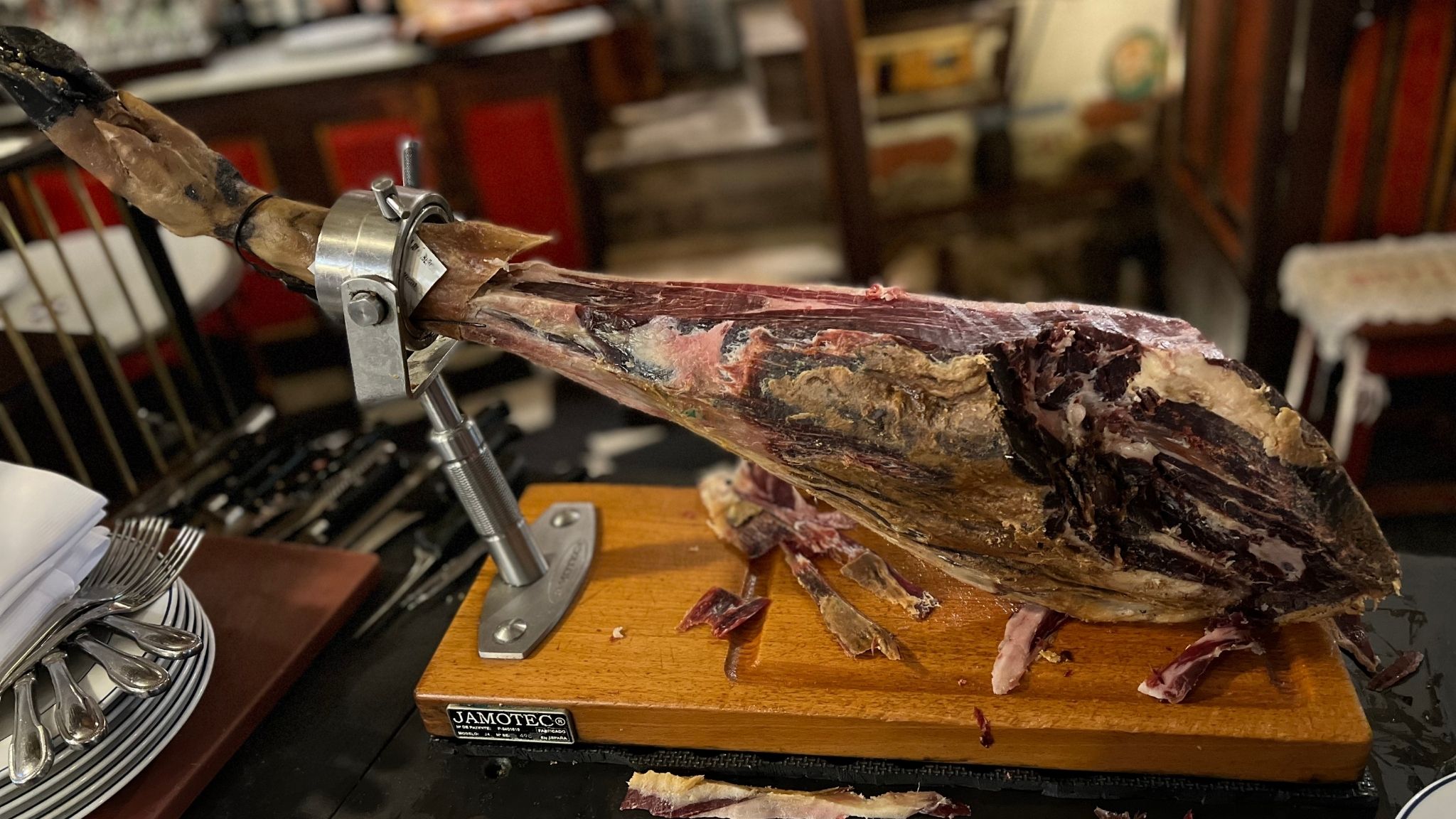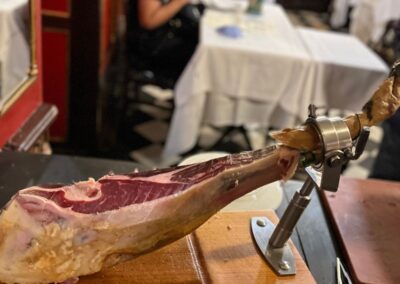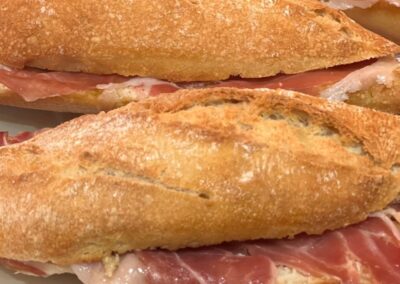Jamón (ham), is probably, not the first thing that pops in your brain when you think about Spanish food. You might think about PAELLA, or TAPAS, some people will think about WINE or SANGRIA. But trust in me, once you try our ham, you will be hooked for life.
You will find small ham sandwiches in all the bars in Spain, I don´t care if you visit a city or the smallest village. If you go to any restaurant you will find artichokes with ham, or peas with ham. Even at your breakfast buffet you will find slices of ham.
Jamón is so present in our daily diet, that whenever you enter any supermarket in Spain, you will find a whole section dedicated to it. If you want to buy some from a Supermarket, I recommend you to not buy the pre-cut ones. Go to the butcher’s counter and ask for some. 150 grams will be enough to make 2 large sandwiches. Go for a good one, one that is about 80€ per Kilo. You will only pay 10-12€ for 2 sandwiches. One tip, ask it to be cut ultra-thin, it is MUCH better.
Jamon History!
Spain is known to be the largest producer and consumer of ham in the world, but there has to be a historical reason for it.
The reason why we eat so much Jamón, has to do with Spanish history and specially with the Spanish Inquisition . You have to remember that in 1492, the Muslim population in Spain were expelled by the Catholic kings. At that moment the “Holly” inquisition would put you on fire if you showed you were Muslim. So, one of the easy ways to find out about your religious heritage was making you eat ham. Muslims do not eat pork.
It is not that in Spain we didn’t eat ham before the XV century, but Isabel and Ferdinand, the Catholic kings, encouraged the consumption of ham in the Spanish diet. They even sponsored the creation of some pig farms. All in the name of “God”.
What Jamon should you buy?
This part is not going to be easy, it is even complicated for Spaniards. We have to divide the Jamón, by what leg we choose, by the breed of the animal, and it is also very important the diet they have eaten.
First of all, the Jamón comes from the back legs of the pork, the front legs are called paletilla. Normally the paletilla is cheaper that the Jamón, the reason is that the front legs have more fat in them and that changes the flavor of it.
About the breed, there is only one Spanish pork, it is called Ibérico. If both parents are Ibérico pigs, it will be called 100% Ibérico. But if one of the parents is not Ibérico, it will only be called Ibérico (not 100% Ibérico) Only a 10% of all the hams you will find in the market are 100% Ibérico.
We call Jamón blanco (white ham) to the ones that come from breeds that are not Ibérico, traditionally the breed we use is Duroc. The origin of the Duroc breed is the USA, it is a mixture between the Old Duroc and the Red Jersey. These white hams are normally called Jamón Serrano or Jamón Curado.
We find four different ways to feed the pig, and each one has a different name:
– Bellota: Bellota means acorn. The bellota pigs have been free range and have only eaten acorns and grass.
– Recebo: These pigs have grown free range and fed with grass, organic fodder and some acorns.
– Cebo de Campo: Free range pigs fed with grass and fodder.
– Cebo: farmed animals fed with cereal fodder and legumes
So, if you want to indulge yourself, you should try our ham. After you try it, you will understand why, Spaniards say that Italian prosciutto or French Jambon du Bayonne, are “Jamón want to be” LOL
Here is a radio show talking with Rick Steves (My personal travel guru) about Spanish jamón. I hope you enjoy it.





